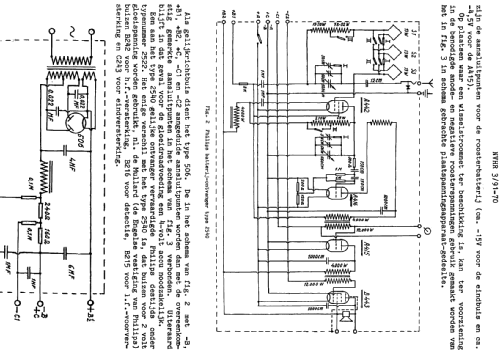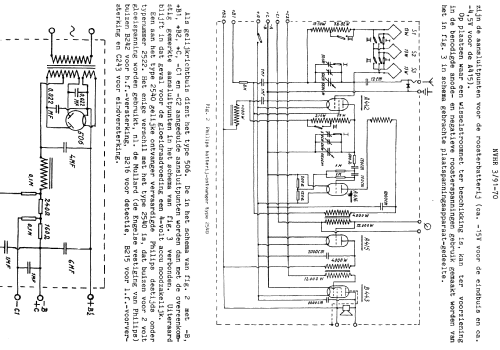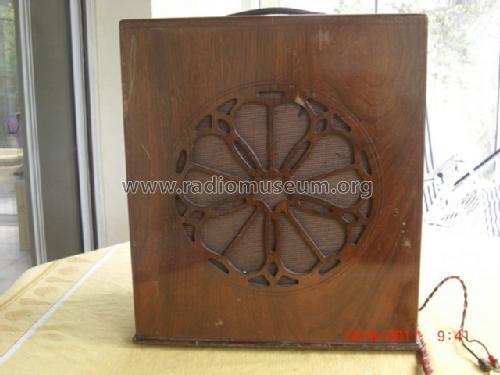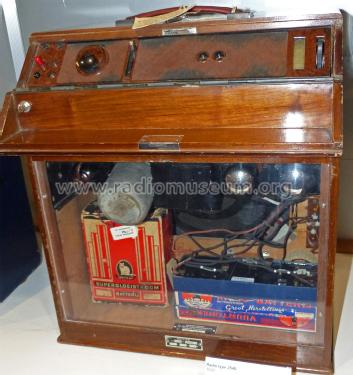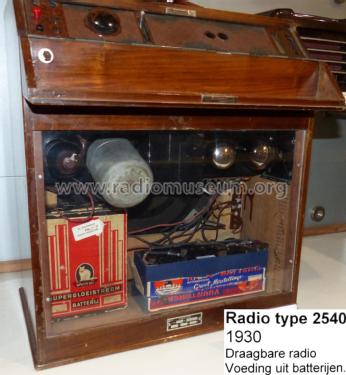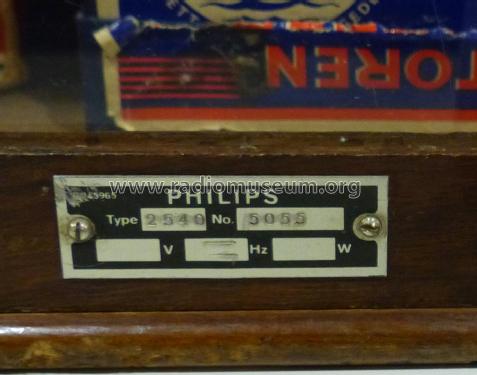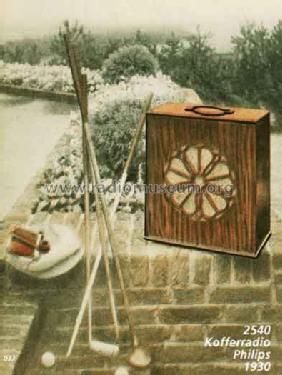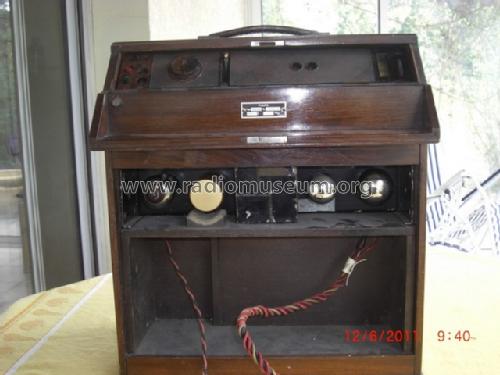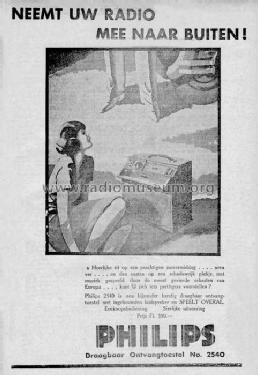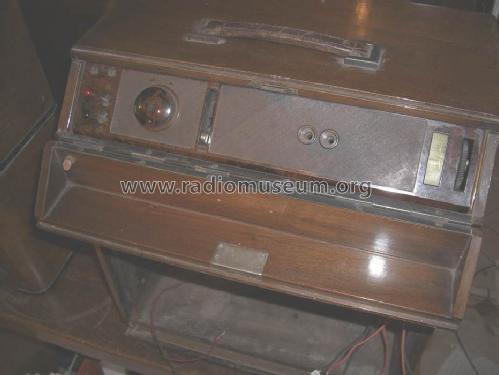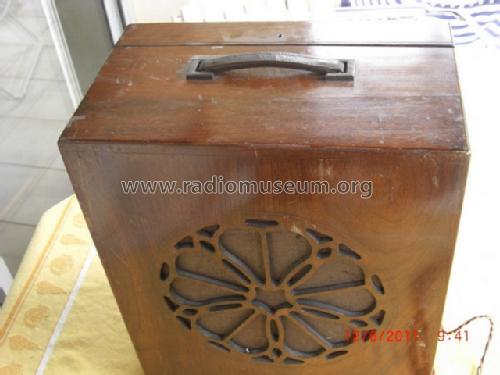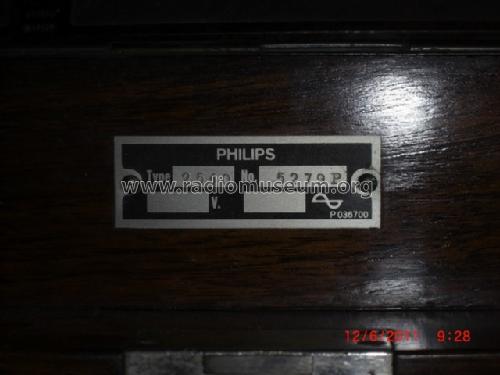- Pays
- Pays-Bas
- Fabricant / Marque
- Philips; Eindhoven (tubes international!); Miniwatt
- Année
- 1930/1931
- Catégorie
- Radio - ou tuner d'après la guerre 1939-45
- Radiomuseum.org ID
- 13174
Cliquez sur la vignette du schéma pour le demander en tant que document gratuit.
- No. de tubes
- 4
- Principe général
- Récepteur TRF - par réaction (régénératif); Réaction
- Gammes d'ondes
- PO et GO
- Tension / type courant
- Piles (rechargeables ou/et sèches) / 2 & 4 & 100-110V & 15 Volt
- Haut-parleur
- HP mais de technologie inconnue
- Matière
- Boitier en bois
- De Radiomuseum.org
- Modèle: 2540 - Philips; Eindhoven tubes
- Forme
- Portative > 20 cm (sans nécessité secteur)
- Dimensions (LHP)
- 400 x 460 x 240 mm / 15.7 x 18.1 x 9.4 inch
- Remarques
-
This radio has a turntable or swivel base to orient the cabinet and access the controls that are on the back.
The circuit has an RF amplifier stage and a reaction detection stage.
The radio has a built-in speaker, internal loop antenna and external antenna inputs, ground and input for pick up, with output for external speaker.
The medium wave band ranges from 500 to 200 meters and the long wave band ranges from 1000 to 2000 meters.
Similar to the Philips 2540 built in England, and to the Philips 2522 which has British Mullard Vf 2 Volt valves.
LS=2034
- Poids net
- 21 kg / 46 lb 4.1 oz (46.256 lb)
- Prix de mise sur le marché
- 550.00 SFr
- Source extérieure
- E. Erb 3-907007-36-0
- Littérature
- Les Radio PHILIPS de collection
- Schémathèque (1)
- - - Manufacturers Literature (Service manual dated 12/5/1930)
- Index des illustrations
- Das Modell ist im «Radiokatalog» (Erb) abgebildet.
- D'autres Modèles
-
Vous pourrez trouver sous ce lien 5233 modèles d'appareils, 4365 avec des images et 3445 avec des schémas.
Tous les appareils de Philips; Eindhoven (tubes international!); Miniwatt
